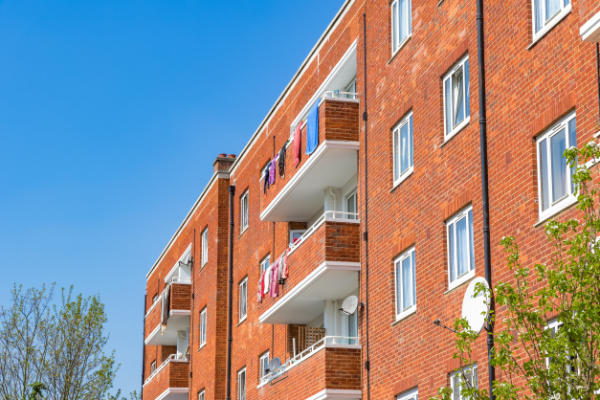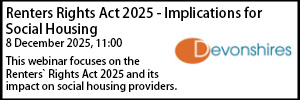Know the facts: Homes (Fitness for Habitation) Act
- Details
 Neil Brand sets out the key considerations for local authorities and landlords arising out of the Homes (Fitness for Habitation) Act.
Neil Brand sets out the key considerations for local authorities and landlords arising out of the Homes (Fitness for Habitation) Act.
Anyone with even a passing interest in social housing can’t have failed to notice the seemingly unstoppable passage of the Private Members’ Homes (Fitness for Habitation) Bill through Parliament over the last 12 months or so.
The Bill received Royal Assent on 20 December 2018 and the Homes (Fitness for Habitation) Act 2018 came into force on 20 March 2019.
The Act amends Landlord and Tenant Act 1985 to require all landlords to ensure that their properties, including common parts, are fit for human habitation at the beginning of the tenancy and throughout.
The obligations imposed by the Act apply to:
- Tenancies of less than 7 years granted on or after 20 March 2019
- New secure, assured and introductory tenancies granted on or after 20 March 2019
- Tenancies renewed for a fixed term on or after 20 March 2019
- From 20 March 2020 - all periodic tenancies (including those that commenced before 20 March 2019).
What is “fit for human habitation”?
The provisions defining what is, and is not, fit for human habitation are contained in the amended s10 of the Landlord and Tenant Act 1985 and include:
- Where the building is neglected and in bad condition
- Where the building is unstable
- Serious damp problems
- Unsafe layout
- Insufficient natural light
- Insufficient ventilation
- Problems with the supply of hot and cold water
- Problems with drainage or lavatories
- Difficulty in preparing and cooking food or washing up.
In addition, if the property is subject to any of the 29 ‘hazards’ set out in Schedule 1 of the Housing Health and Safety (England) Regulations 2005, it will be deemed unfit for human habitation. Those hazards include:
- Exposure to house dust mites, damp, mould or fungal growths (Paragraph 1 of Schedule 1)
- Exposure to low or high temperatures (Paragraphs 2 and 3)
- A lack of adequate space for living and sleeping (Paragraph 11)
- A lack of adequate lighting (Paragraph 13)
- Exposure to noise (Paragraph 14)
- Electrical hazards/exposure to electricity (Paragraph 23).
Exceptions to liability
The Act does, however, list a number of exceptional circumstances where a landlord will not be liable for the lack of fitness for human habitation of premises, including:
- Where the problem is caused by the behavior of the tenant
- Where the problem is caused by acts of God
- Where the problem is caused by the tenants’ own possessions
- Where the landlord has not been able to obtain consent for any necessary works (for example planning permission or permission from freeholders to undertake works). In these circumstances, the landlord must be able to provide evidence of its reasonable efforts to gain the necessary permission
- Where the tenant is not an individual, eg lettings to other landlords.
Consequences of breach
In the event that a Court finds a landlord in breach of the Act, the landlord can be ordered to pay compensation to the tenant and/or to undertake works, including improvement works, to the premises. There is currently no prescribed limit on the compensation that a landlord can be ordered to pay. The lack of clarity in this respect should act as a further incentive to landlords to ensure that they are not in breach of the new legislation.
A further consequence of being found in breach of the Act is that landlords of assured shorthold tenants will not be able to avail themselves of the section 21 “no fault” possession procedure, provisions which effectively run alongside the protections already in place for such tenants from retaliatory evictions under the Deregulation Act 2014.
Notice and timeframes
Landlords are liable to effect repairs to remedy a hazard within “…a reasonable amount of time…” of being made aware of the existence of the defect by the tenant, although there is no notice requirement in relation to the common parts of a building, in which case a landlord will be deemed to be impliedly on notice.
As with disrepair under section 11 Landlord and Tenant Act 1985, what is a “reasonable amount of time” is not specifically defined by the legislation and will depend on all the relevant circumstances. The Act makes clear that a landlord should, upon being notified of a defect, ensure that it is taking active steps to remedy the defect and ensure that the premises are put back into a habitable condition, failing which the tenant can issue proceedings seeking damages and an order compelling the landlord to undertake the necessary works.
Next steps
Landlords should ensure that:
- as of 20 March 2019, any properties let under a new tenancy are fully compliant with the Act, and are not subject to any relevant defects - as this may risk enforcement action being taken against them.
- during the next 12 months, premises which were let prior to 20 March 2019 are made compliant with the Act. Failure to do so could risk an influx of claims at the end of the transitional period on 20 March 2020.
- they are fully acquainted with the Ministry of Housing, Communities and Local Government (MHCLG) Guidance for Landlords.
- policies and procedures are updated to manage the risk of tenant solicitors and claims management seeking to pursue claims against landlords, when as the Act come in to force.
Local authorities
Stock-holding authorities, in their capacity as landlords, are subject to the Act in the same way as any other landlord. Therefore authorities should consider carrying out stock condition surveys to ensure that any premises in their ownership or management are compliant with the Act.The MHCLG has published Guidance for Local Authorities. This recommends that all authorities:
- consider how the Act, and the associated Guidance, might sit with their policies concerning private rented sector enforcement
- review their enforcement policies
- support tenants in pursuing the remedies that will be available to them
- consider developing a promotional campaign to inform tenants of the actions available to them, in the event of their landlord breaching the Act
- engage with other landlords - particularly social landlords, in an effort to raise their awareness of the obligations imposed upon them.
Neil Brand is a partner at Bevan Brittan. He can be contacted on 0370 194 7807 or



































